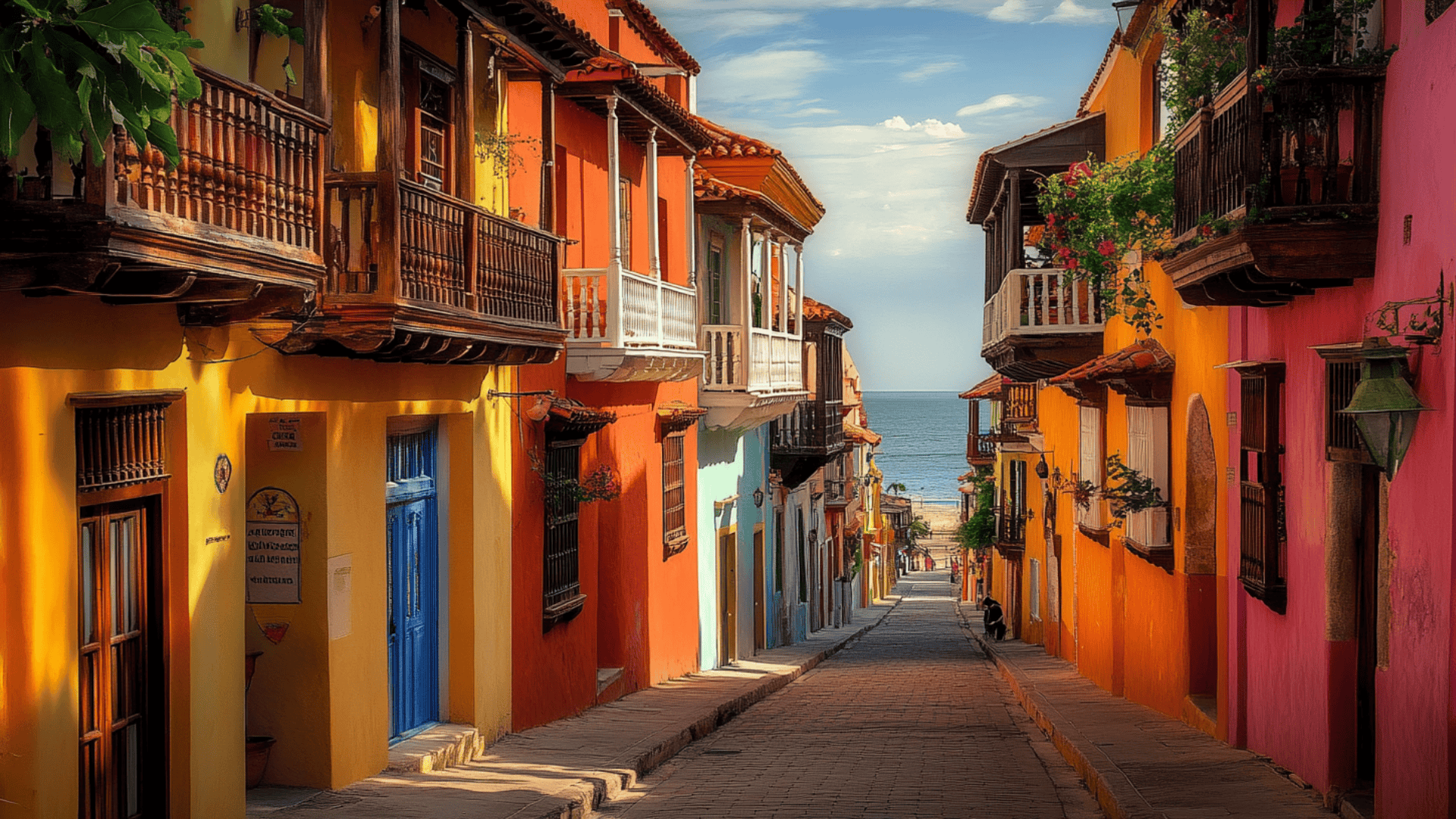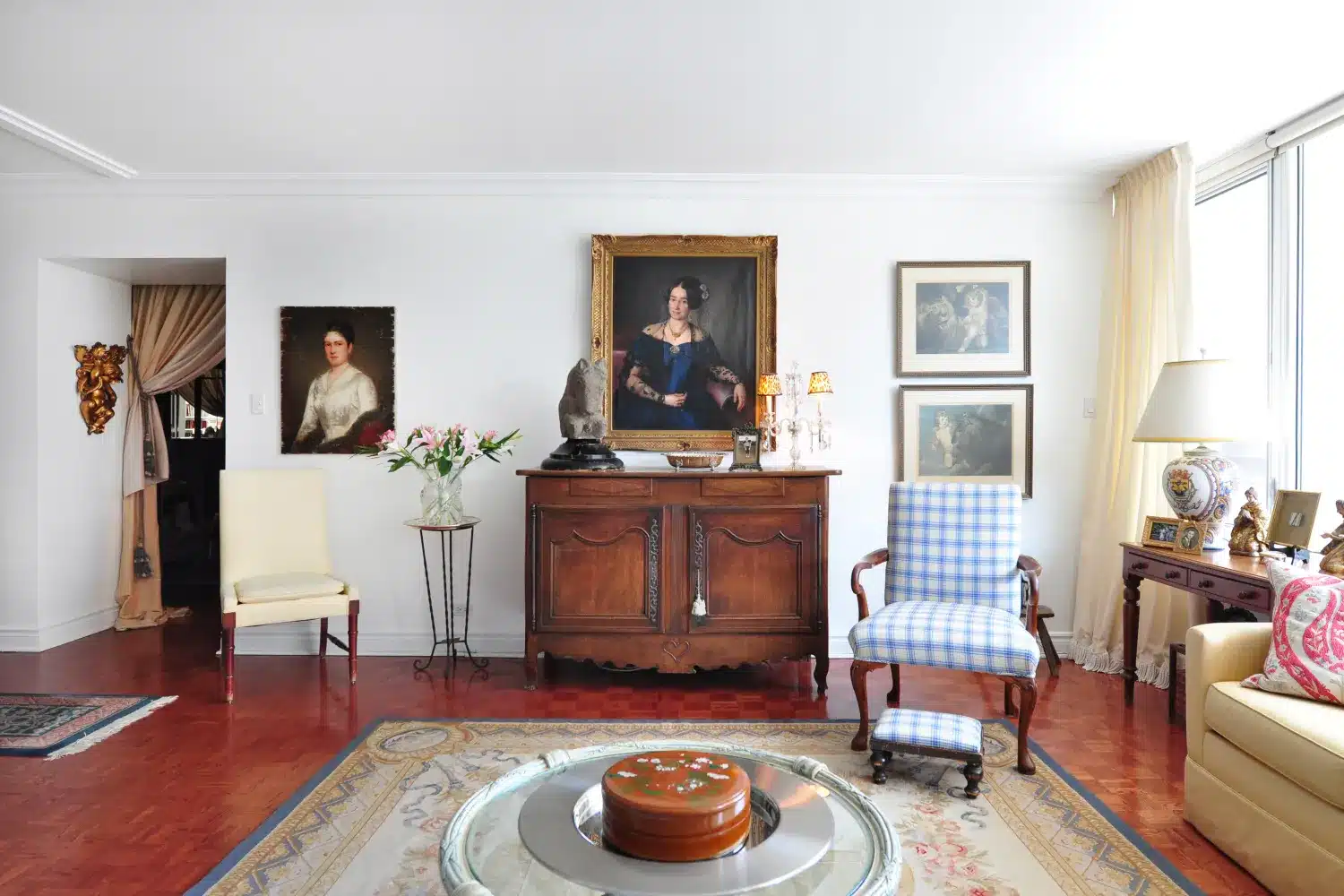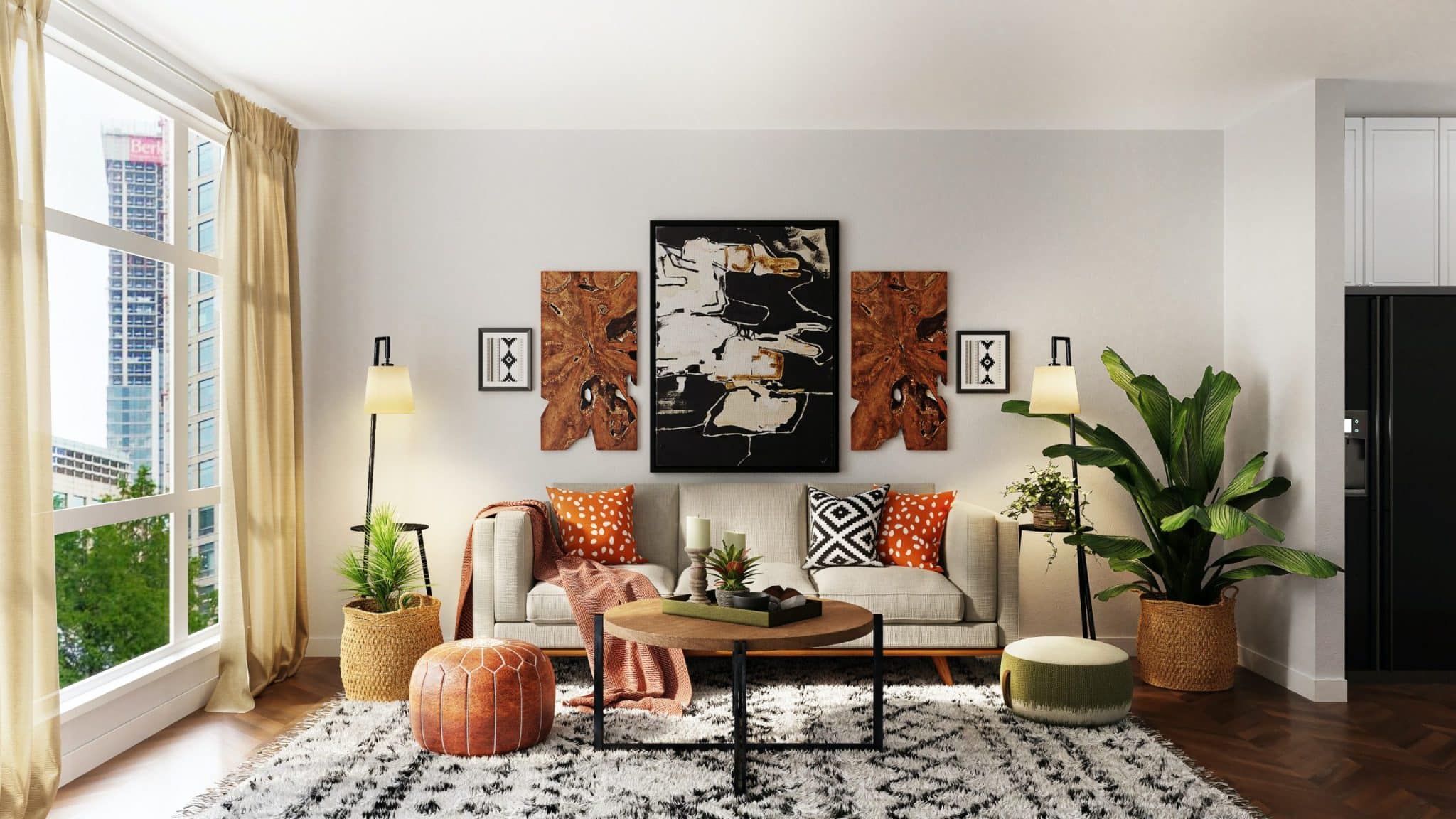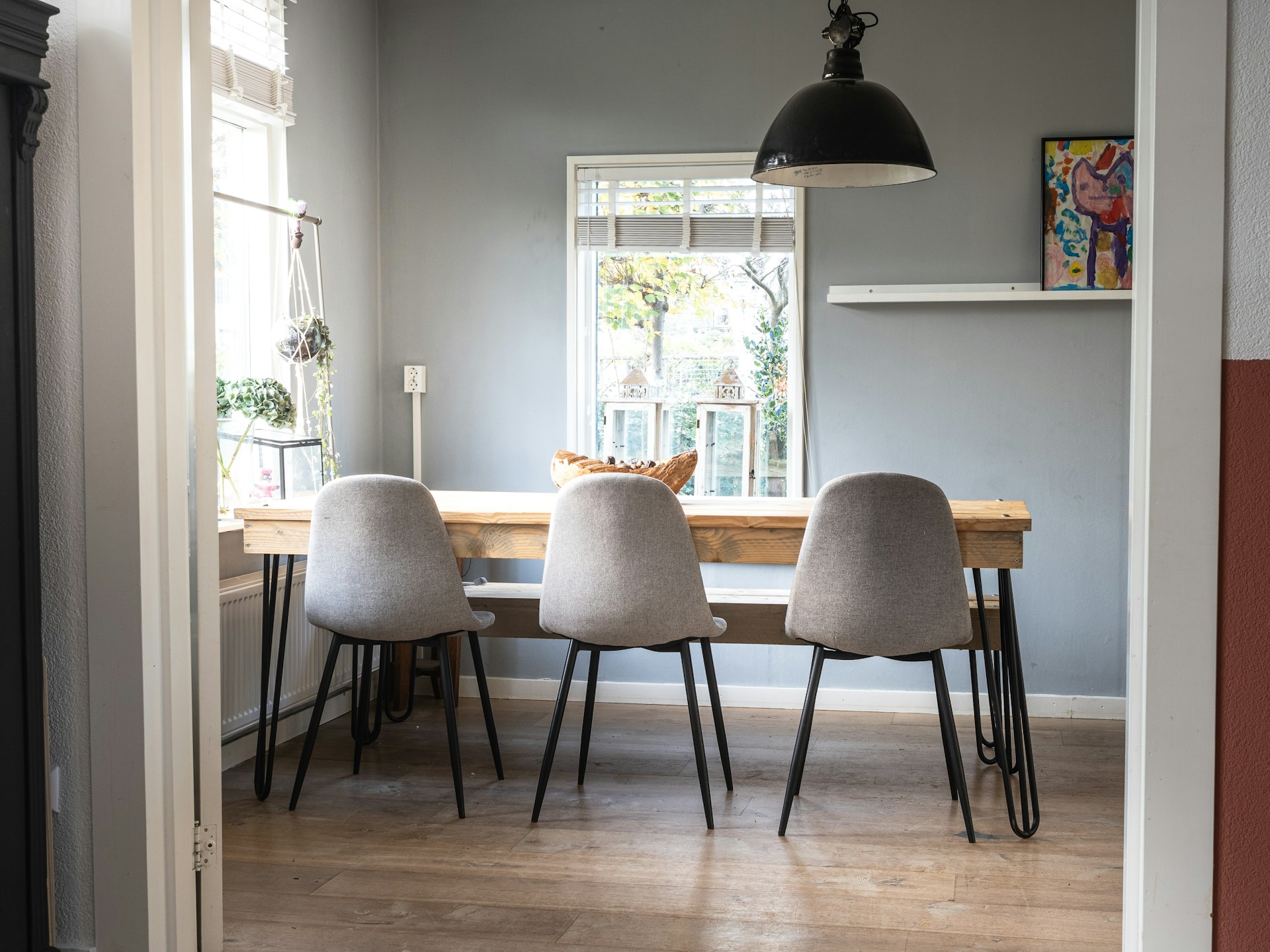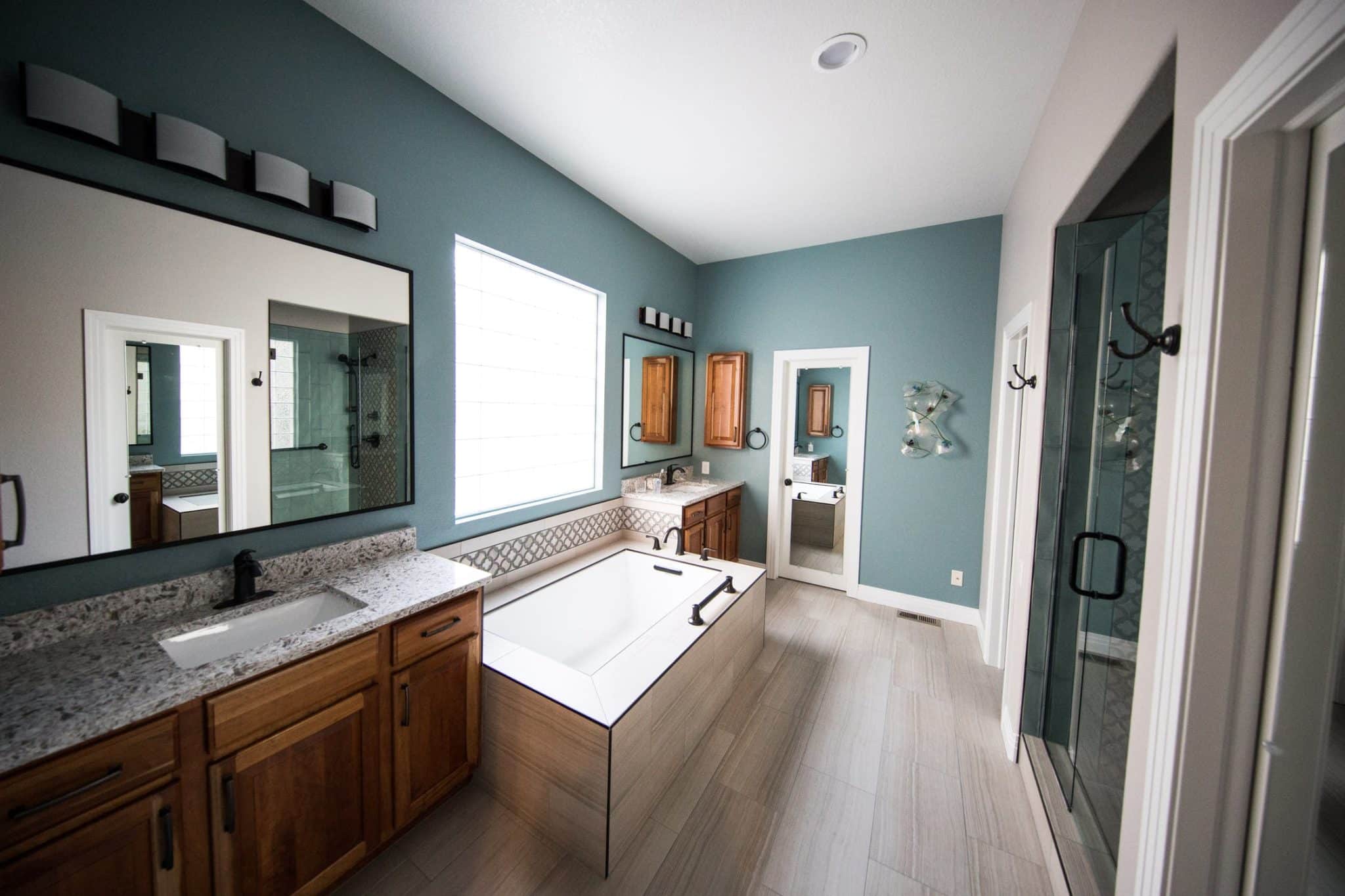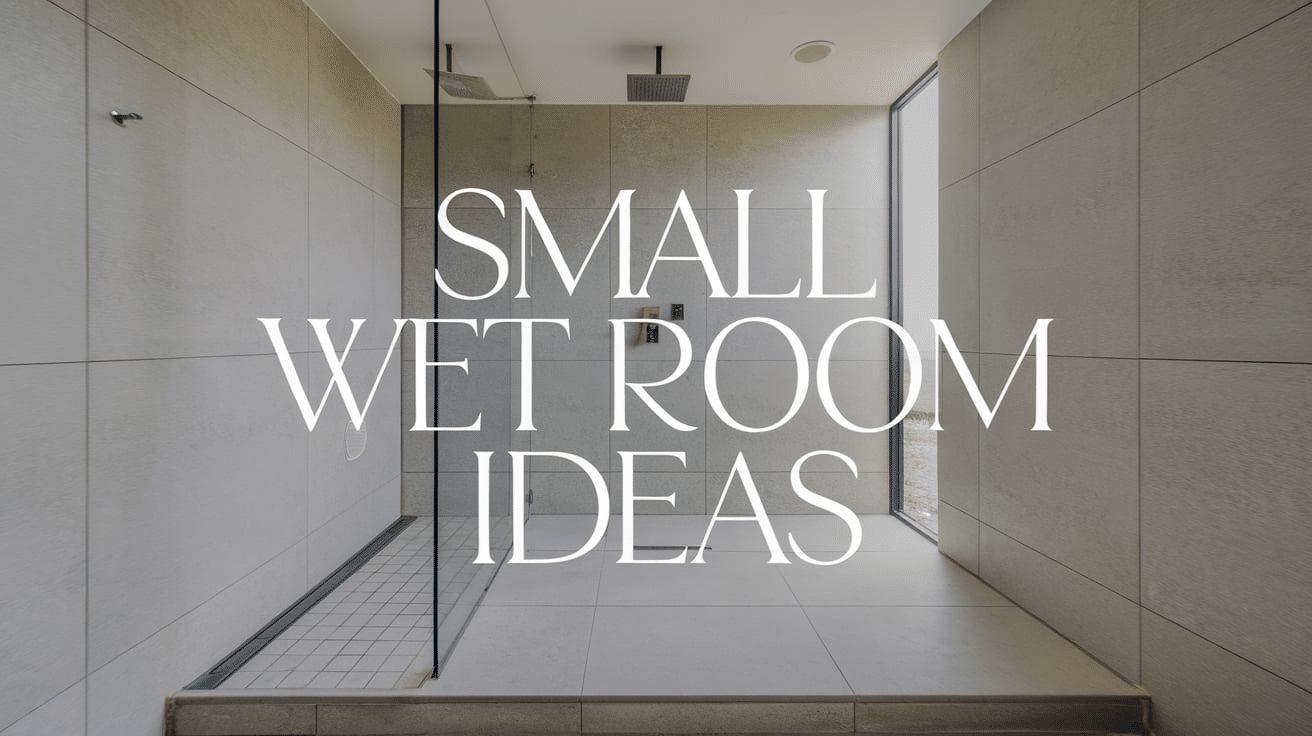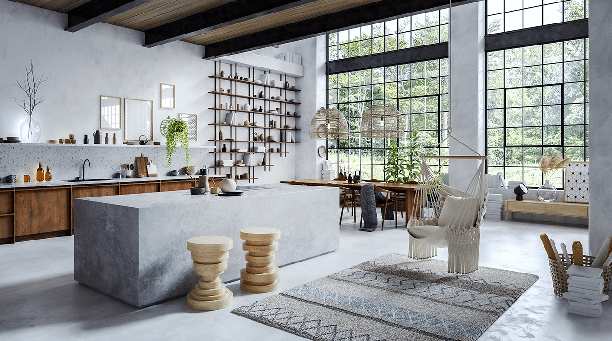Colombia’s Architecture and Popular Landmarks
Have you ever walked through a city and felt like every building had a story to tell?
That’s exactly how I felt in Colombia. You’ll see clay homes built by Indigenous communities, Spanish churches with red-tile roofs, and sleek glass towers—all sharing the same streets.
It’s like the past and present are having a conversation right in front of you.
Colombia’s architecture shows where it has been and where it is going. It’s bold, colorful, and full of character.
If you’re like me and love when a place feels alive through its design, you’re in for a treat.
Let’s walk through the streets of Colombia together—and see how its architecture tells the story of its people.
Colonial Architecture in Colombia
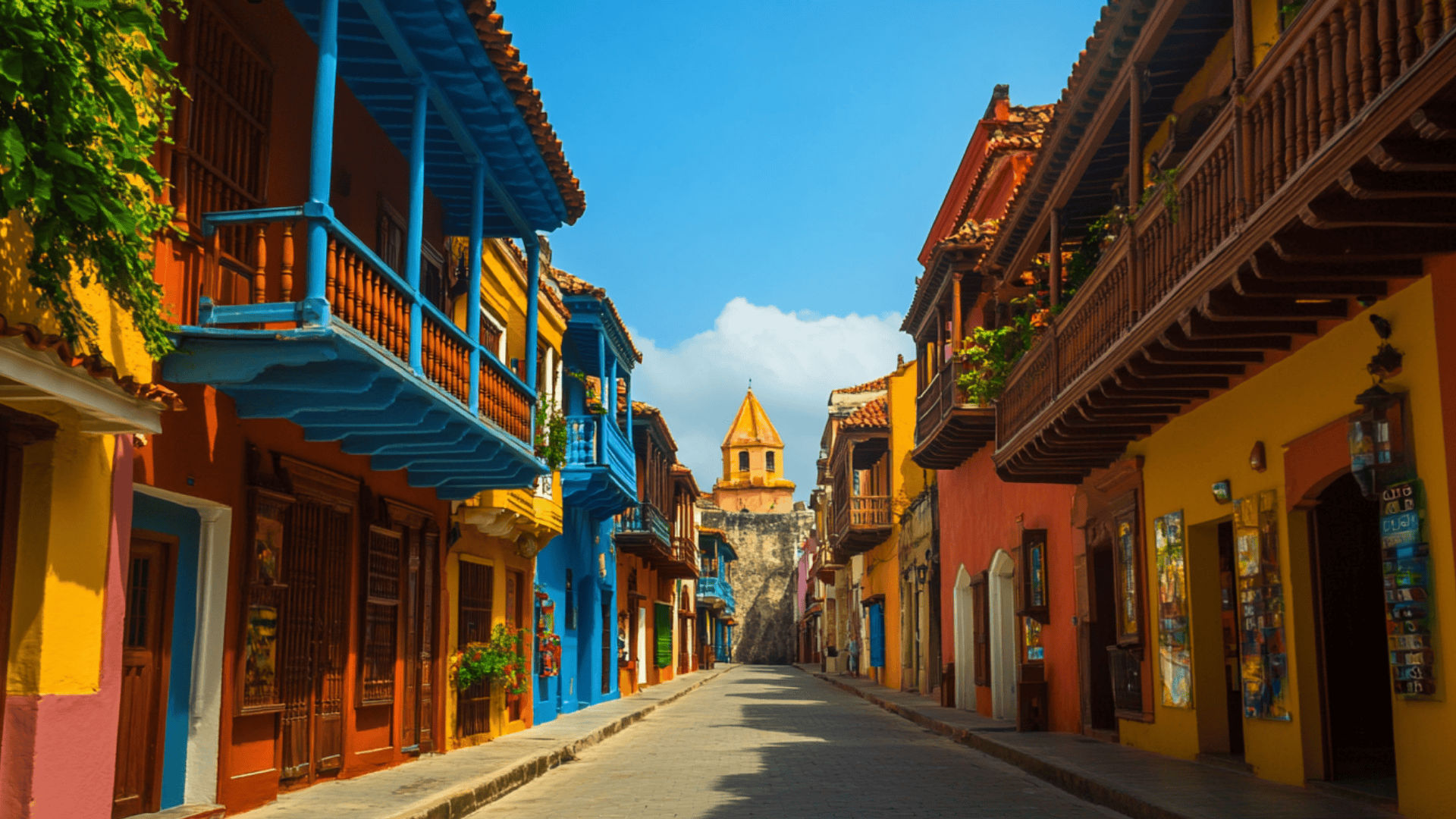
When the Spanish arrived in Colombia, they brought a new way of building towns.
You’ll notice streets laid out in neat grids, with a main plaza at the center. These plazas often had a church, a government building, and space for people to gather.
Many of these early buildings still stand today. They were built with local materials like adobe and stone but followed Spanish designs with arches, columns, and thick walls.
This mix of European planning and local technique shaped how cities grew—and still shapes them now.
Notable Colonial Cities and Sites
If you enjoy walking through history, you’ll love these places:
- Cartagena: Visit San Felipe Castle and Las Bóvedas near the walled city
- Bogotá: Stop by the Santa Clara Church and Quinta de Bolívar
- Barichara and Mompox: Small towns with cobblestone streets and well-kept colonial homes
Each spot gives you a different view of Colombia’s colonial past.
Common Features and Materials
Colonial architecture in Colombia has a style that’s easy to spot once you know what to look for.
Most buildings have an inner courtyard. These open spaces bring in sunlight and help cool the home, especially in warm regions.
Roofs are usually made with red clay tiles, while the walls are built with adobe or stone. These materials were easy to find and worked well with the climate.
You’ll often see wooden balconies facing the street. They weren’t just for looks—they were used for watching parades, markets, and daily life outside.
Many buildings also feature carved details around doors and windows. These Spanish Baroque elements gave a touch of art and beauty while still feeling grounded in local tradition.
Republican and Modernist Colombia Architecture
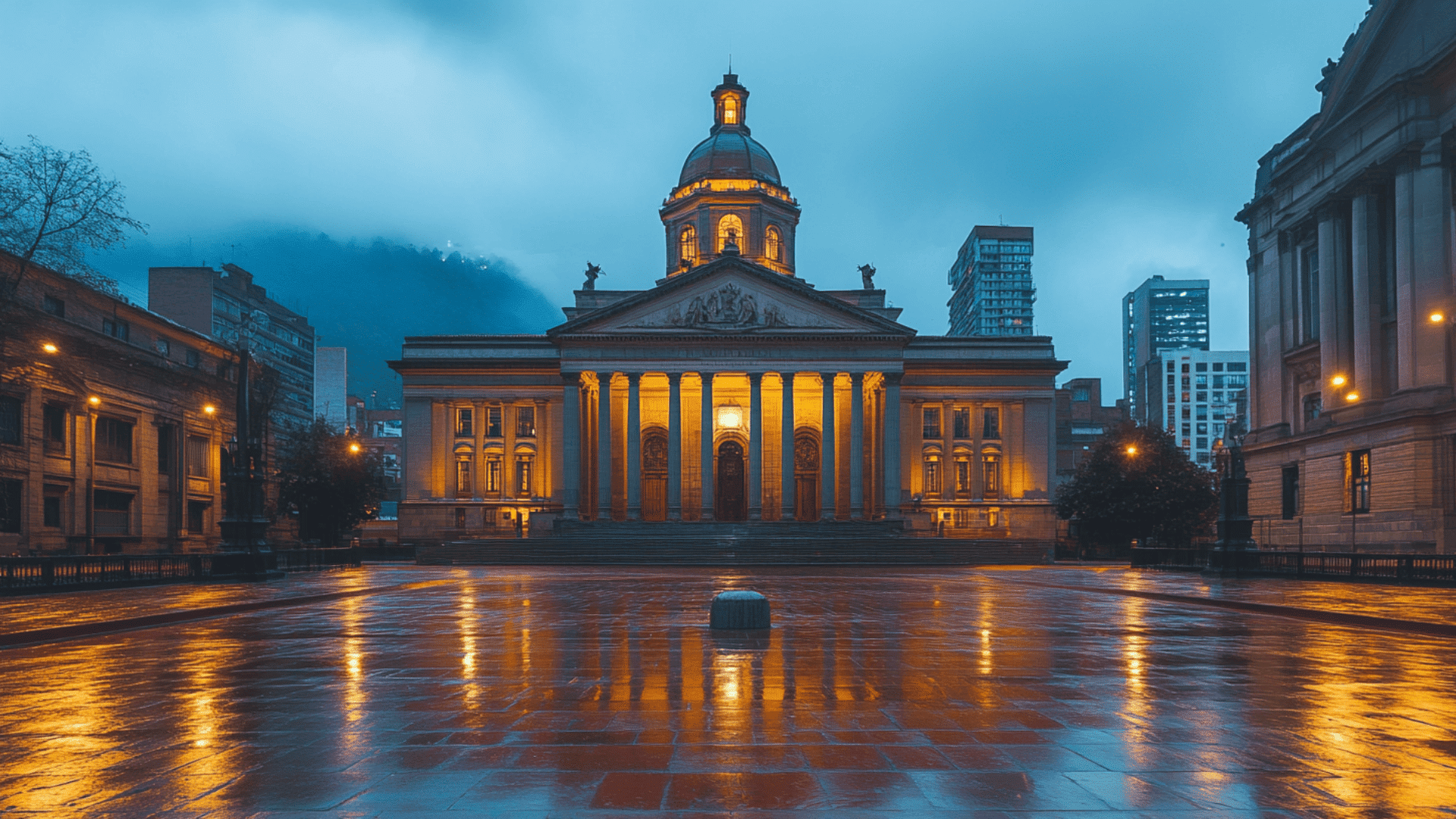
Republican and Post-Colonial Architecture
After Colombia gained independence, the focus of architecture began to shift.
Buildings were no longer just for the church—they were now for the people. You’ll see this in the rise of public spaces and government buildings that were meant to serve the growing nation.
Two standout examples are the Capitolio Nacional, where laws are made, and the Teatro Colón, known for its beauty and performances.
During this time, architects leaned into neoclassical styles—grand columns, domes, and symmetry—but still used local materials.
This marked a move from religious to civic pride in design.
Rogelio Salmona and the Rise of Modernism
Rogelio Salmona changed the way people thought about buildings in Colombia.
He used red brick in bold, creative ways. His designs included open spaces, gardens, and flowing water, all meant to connect people to their surroundings.
One of his most famous works is Torres del Parque in Bogotá. It’s not just a group of towers—it’s a blend of homes, nature, and public areas that still feels fresh today.
Salmona’s work helped shape what modern Colombian architecture looks like now.
Colombian Architects Shaping the Future
Today, a new group of architects is making their mark.
One of the most well-known is Giancarlo Mazzanti. He focuses on schools, parks, and libraries—places built for everyday people.
His designs often use bold shapes and bright colors, but they always keep one thing in mind: people first.
Other architects are following this path, too. They’re mixing smart design with the real needs of growing cities.
This blend of care, creativity, and innovative design in Colombia is helping shape its future—one building at a time.
Contemporary and Sustainable Colombia Architecture
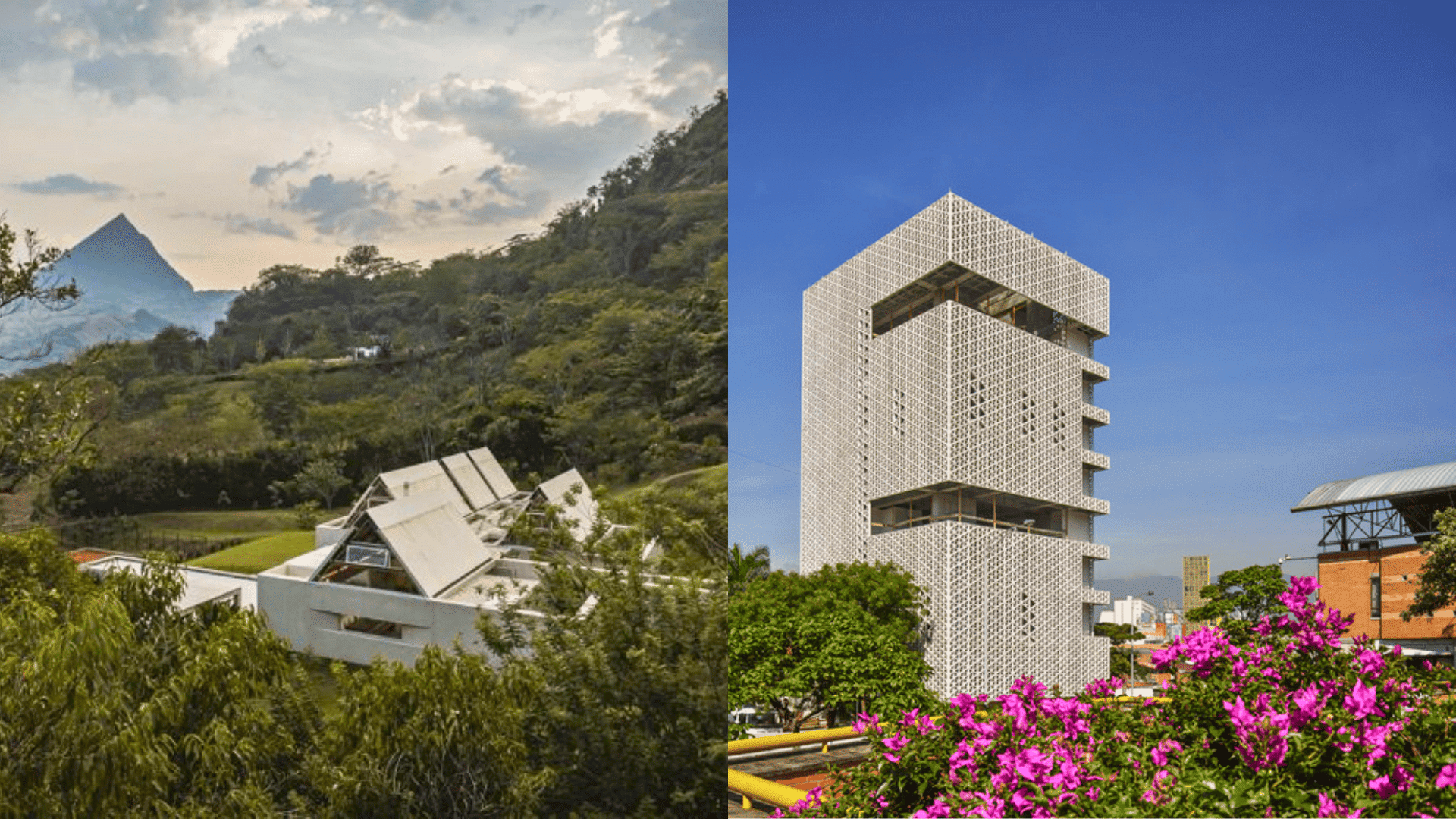
Working with the Landscape and Community
When I visited Medellín, one thing stood out—the buildings were made to help people, not just impress them.
You’ll see this clearly in projects like the Metrocable, which links hillside neighborhoods to the rest of the city. It’s not just transportation—it’s a lifeline.
The library parks are another great example. These public spaces were designed so people could read, gather, and feel connected to their community.
In Colombia, architecture often solves real-life problems. This kind of people-centered design plays a big role in community development and shows how thoughtful planning can truly change lives.
Integration of Technology and Sustainability
I’ve always been interested in how buildings work with nature instead of fighting it—and Colombia does this really well.
Many new buildings use guadua, a native bamboo that’s strong, light, and easy to grow. You’ll also see green rooftops, rainwater systems, and designs that bring in natural light and fresh air.
These features aren’t just “nice to have”—they help reduce energy use and fit the local climate.
What you’re seeing here is a steady shift toward sustainable architecture in Colombia. And it’s not just for big projects—these ideas are showing up in homes, schools, and community centers across the country.
Vivid Colors and Modern Shapes
If there’s one thing that sticks with me about modern Colombian buildings, it’s the color.
You’ll notice homes painted in bright blues, oranges, and greens. Public buildings often feature large murals, curved shapes, and playful designs that make them stand out. This is not just for style—it reflects the culture’s creativity and energy.
This use of bold color and form is a key part of Colombian architectural identity today. It’s expressive, modern, and rooted in a deep sense of pride.
And when you see it in person, you can feel how much it matters to the people who live there.
Regional Variations in Colombia Architecture
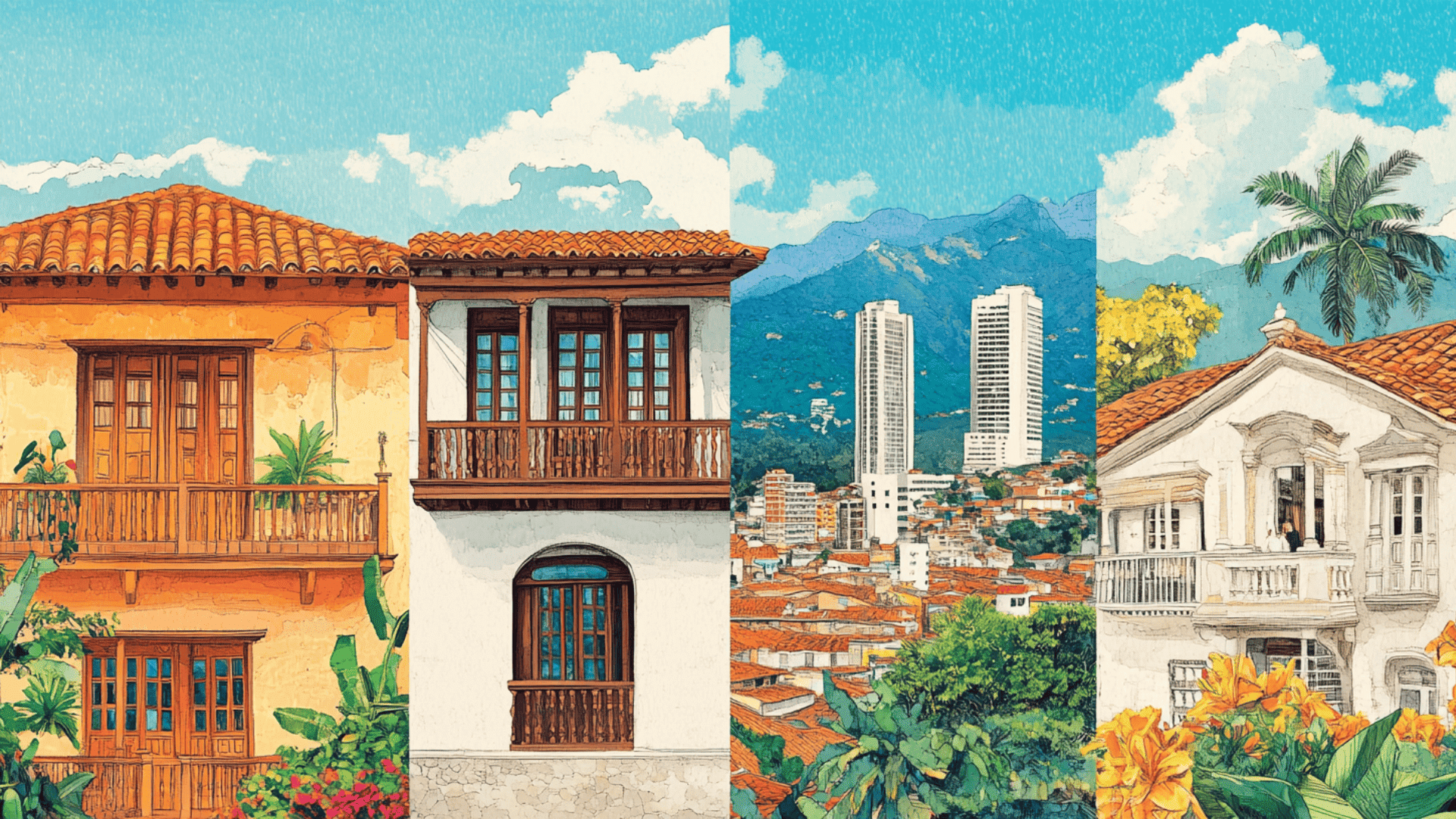
Coastal Areas (Cartagena, Santa Marta)
When you walk around Cartagena or Santa Marta, you’ll feel how the buildings work with the sea.
You’ll see old forts, like San Felipe Castle, built to protect the coast. Colonial homes here are designed to handle heat and humidity, with wide windows, tall ceilings, and breezy layouts that let air flow through.
Many use courtyards and thick walls to stay cool—great examples of tropical architecture that prioritizes comfort while remaining beautiful.
Andean Region (Bogotá, Medellín)
In the Andes, everything changes—especially how buildings are shaped. The land is steep, and the cities are packed with energy.
In Bogotá and Medellín, you’ll notice tall buildings that make the most of narrow city spaces. Earthquake safety is also a big focus here.
These cities offer a mix of urban Colombian buildings and preserved colonial streets. It’s where the old and new sit side by side, and it somehow works.
Amazon and Orinoco Regions
If you’ve ever wondered how people build in hot, rainy places, the Amazon and Orinoco regions have the answer.
Many Indigenous homes are raised off the ground to stay dry and catch breezes. Roofs are large and sloped to keep rain out.
These simple, smart structures show how vernacular architecture in Colombia fits the land perfectly—without needing much more than nature provides.
Coffee Region (Salento, Filandia)
In places like Salento and Filandia, the homes are just as colorful as the landscape.
You’ll see bright façades, wooden balconies, and walls made with bahareque, a mix of bamboo and mud. This style has been used for generations.
This region is known for its charm, and the buildings reflect that. It’s a picture-perfect example of rural Colombian architecture at its best.
Small Towns with Big History
If you’re into quiet towns that feel frozen in time, you’ll love Barichara, Mompox, and Villa de Leyva.
These places are full of cobblestone streets, whitewashed walls, and tiled roofs. Most buildings have been carefully preserved, and many are still used as homes, inns, or local shops.
Here, historic preservation in Colombia is more than a rule—it’s part of daily life. You’ll feel it in every step.
Top Architectural Landmarks in Colombia
1. Walled City of Cartagena
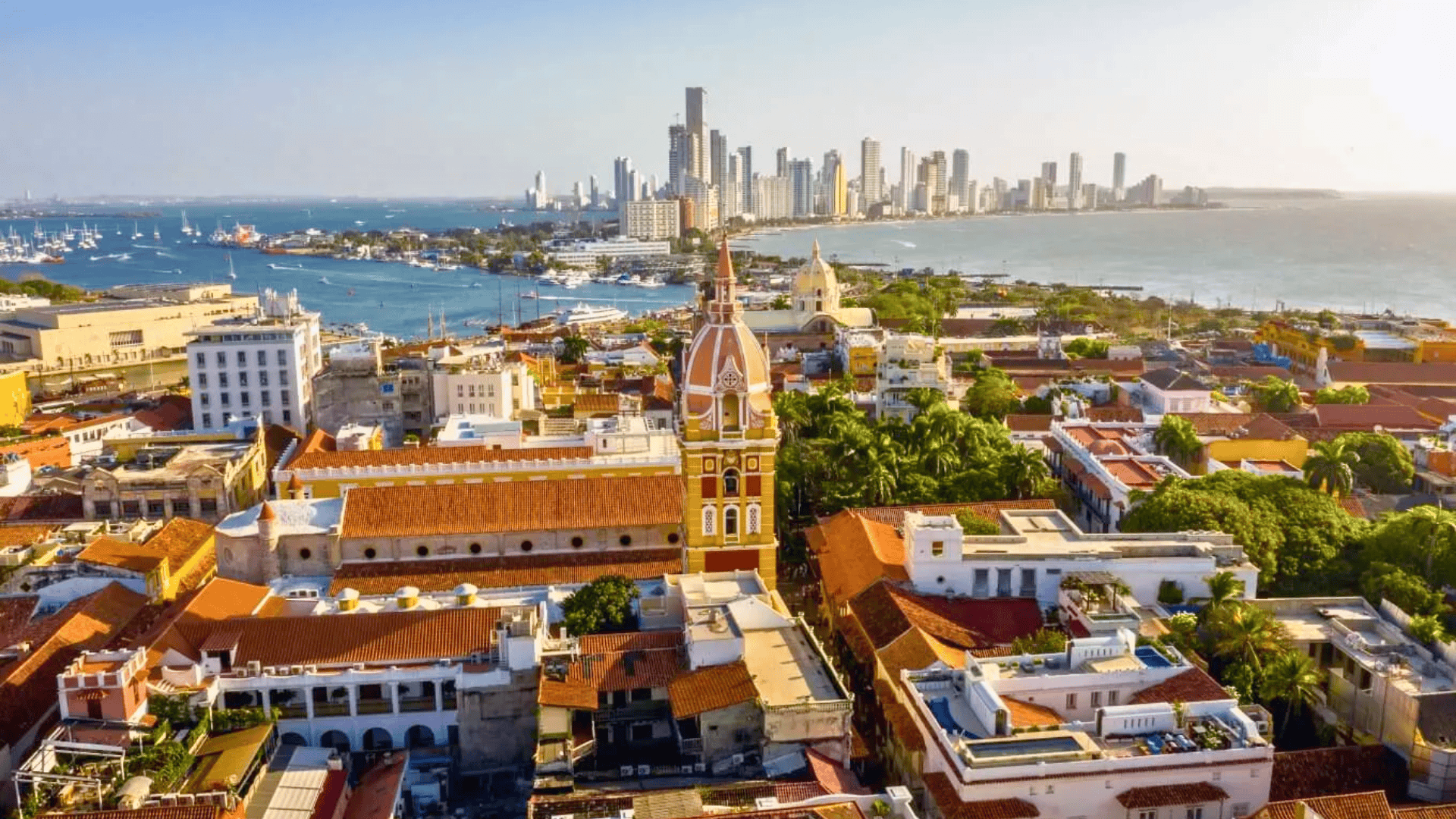
A UNESCO World Heritage Site, this historic district is filled with colonial homes, balconies, cobblestone streets, and vibrant colors—all surrounded by centuries-old stone walls.
- Type: Historic
- Style: Colonial
2. Salt Cathedral of Zipaquirá
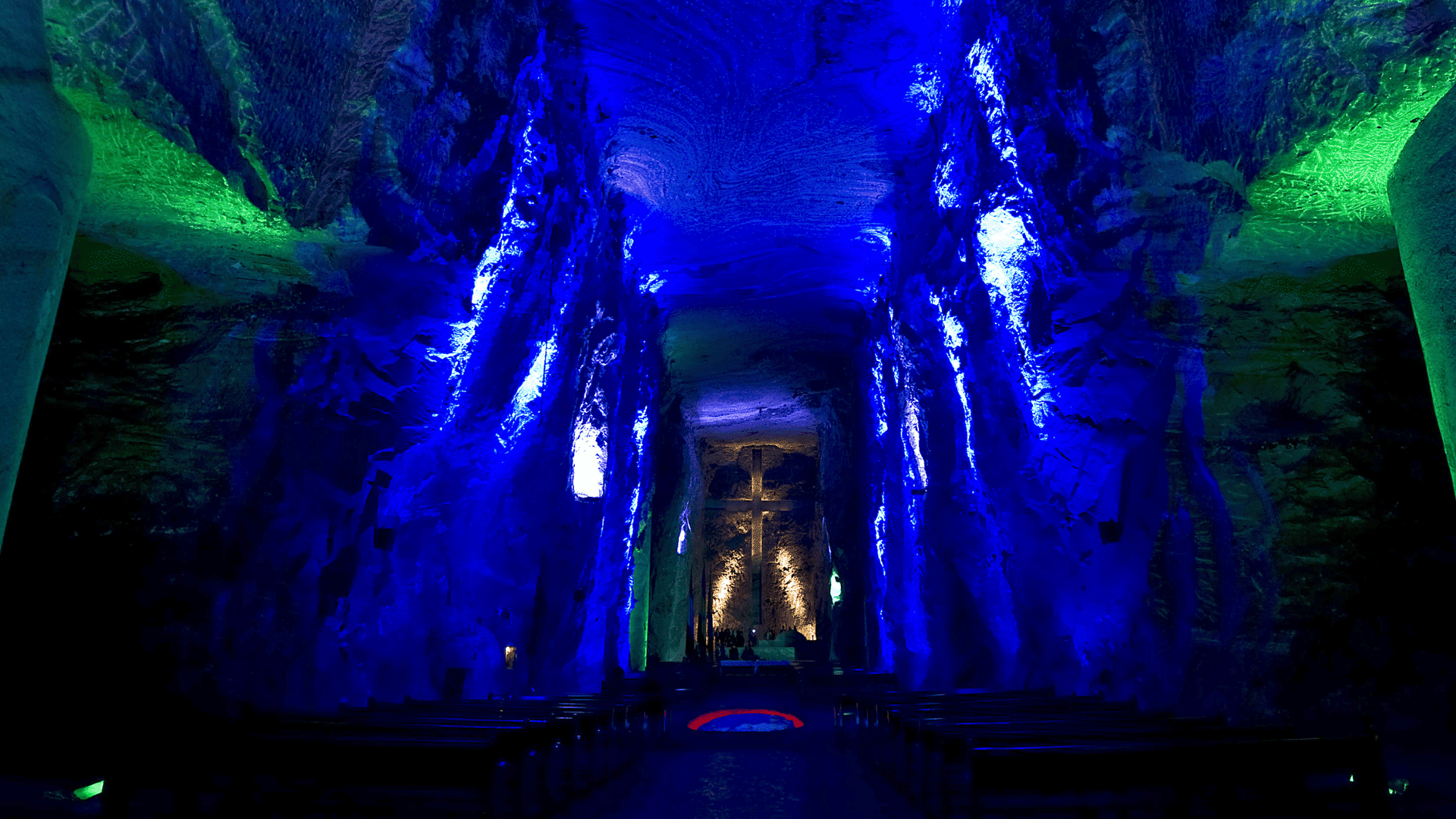
Built inside a former salt mine, this underground church is both a place of worship and a stunning piece of Colombian architecture carved directly into the rock.
- Type: Religious
- Style: Carved
3. Torres del Parque (Bogotá)
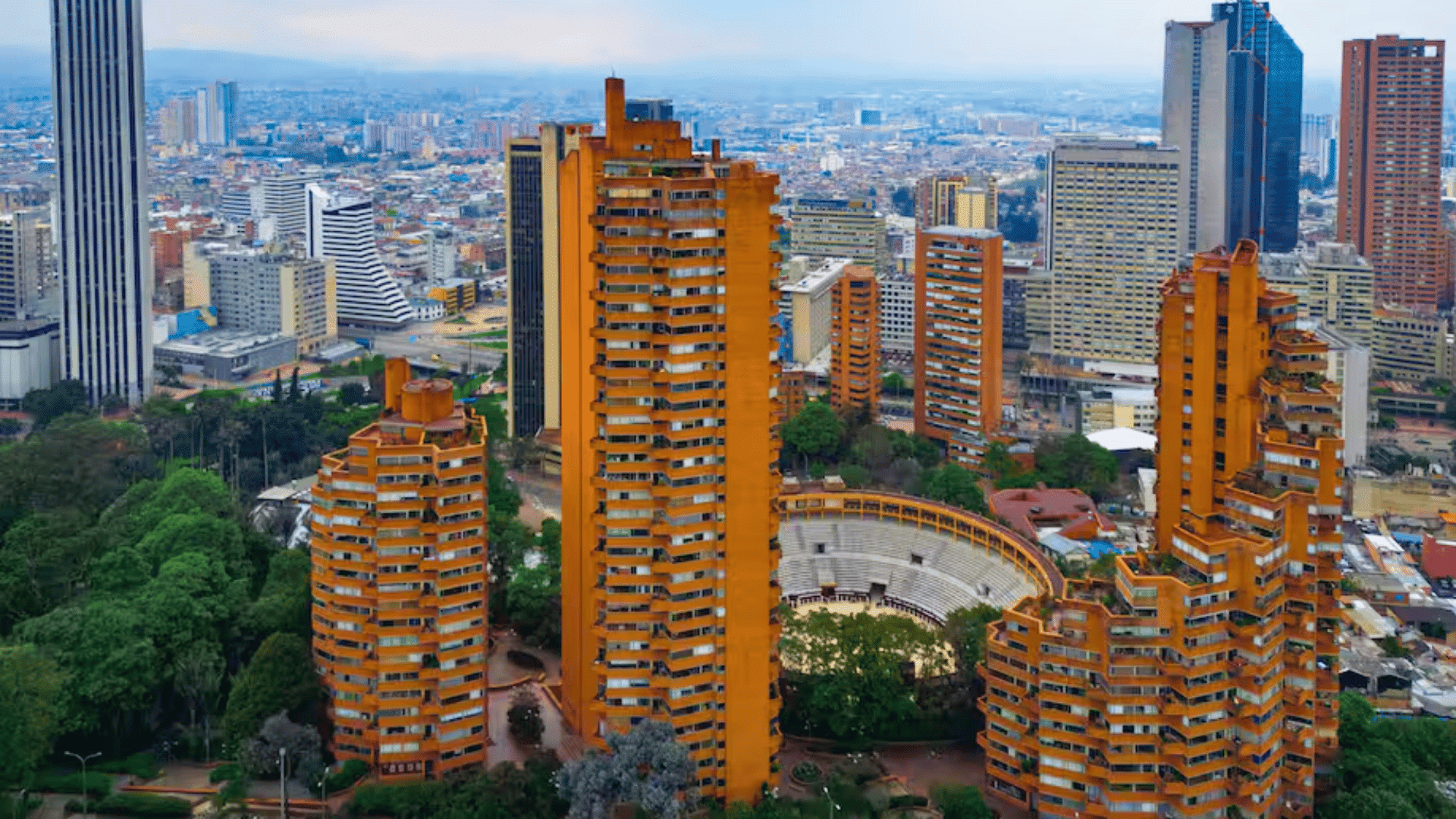
Designed by Rogelio Salmona, these brick towers blend with the hillside and city skyline, offering a bold example of modern residential design in Colombia.
- Type: Residential
- Style: Modernist
4. Santa Clara Church (Bogotá)
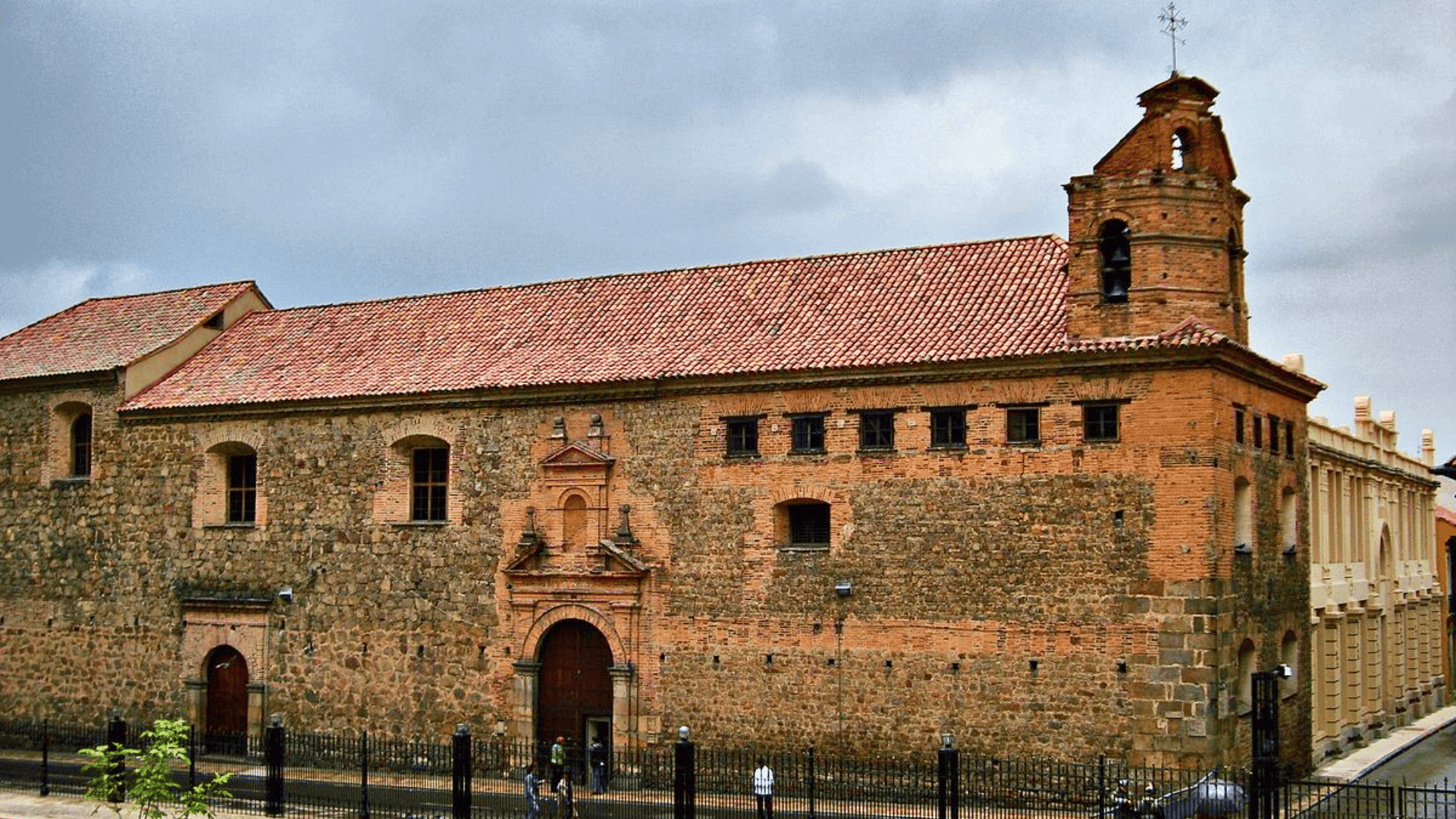
It is a beautiful 17th-century church known for its gold-covered altars, detailed woodwork, and baroque style and is now used as a museum.
- Type: Religious
- Style: Baroque
5. San Felipe de Barajas Castle
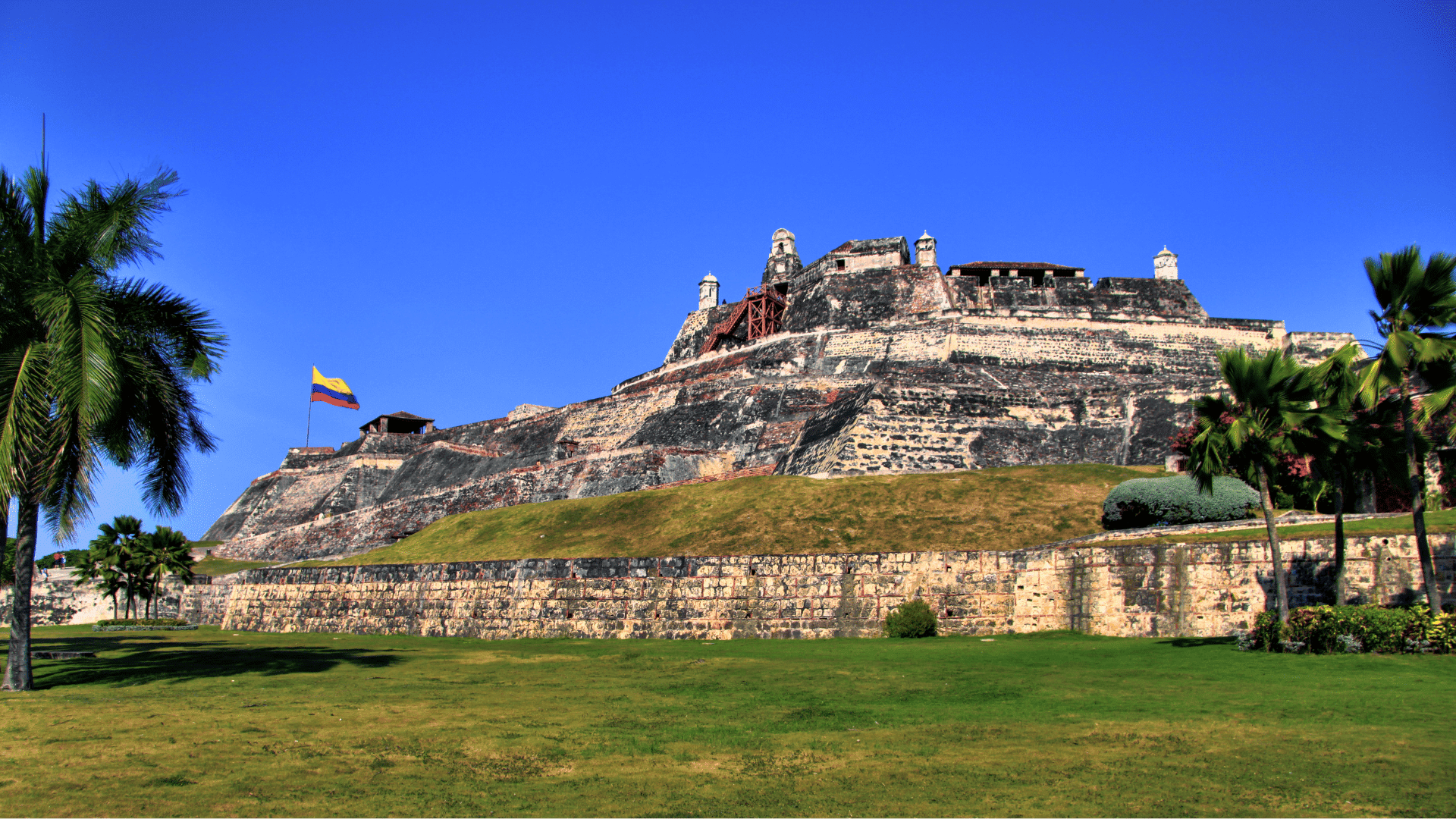
A massive fortress in Cartagena built by the Spanish to protect the city from invasions. It shows the military side of colonial architecture.
- Type: Fortress
- Style: Colonial
6. Villa de Leyva’s Plaza Mayor
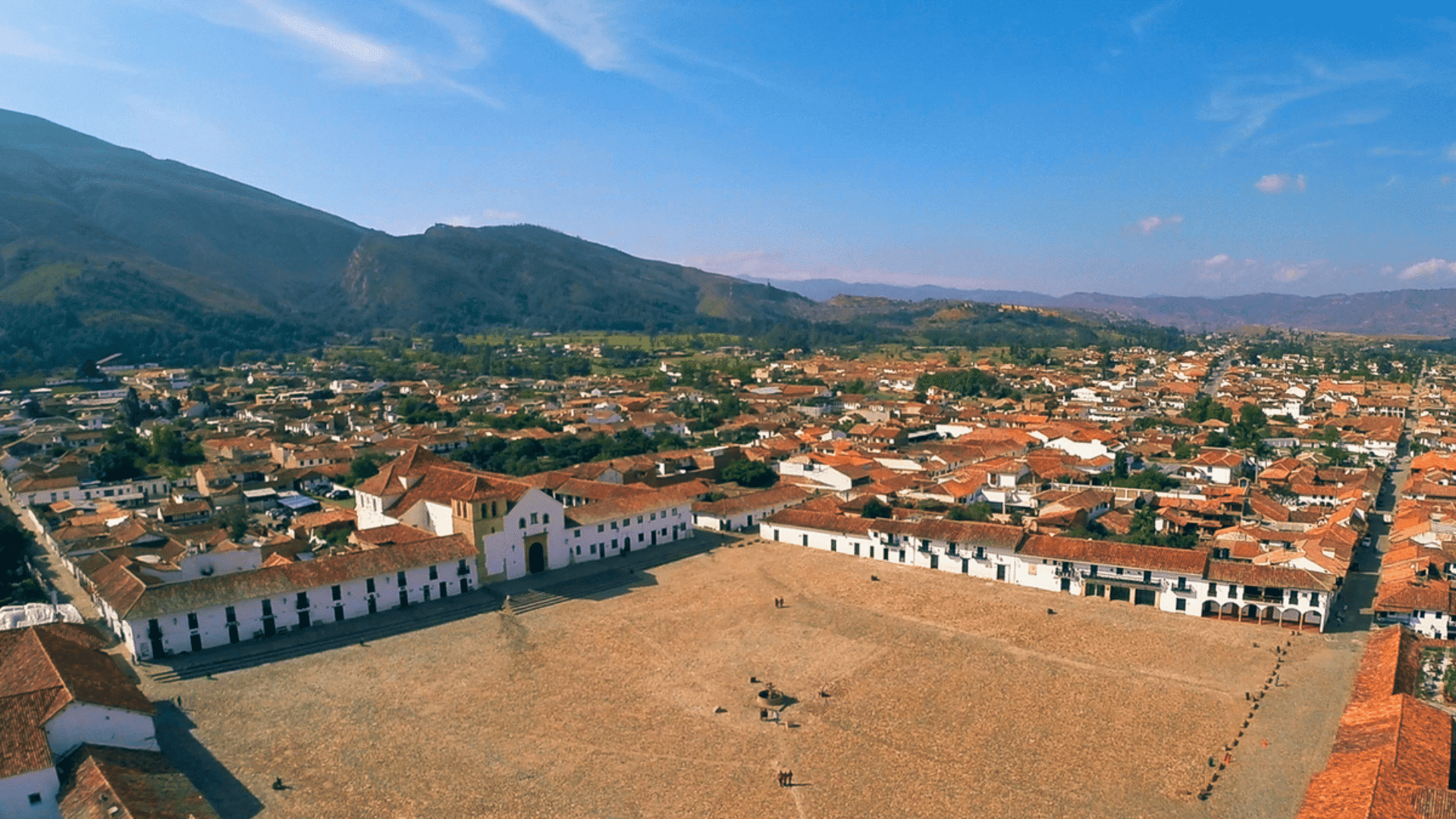
One of the largest town squares in South America, surrounded by colonial buildings, whitewashed walls, and quiet charm.
- Type: Civic
- Style: Colonial
7. Biblioteca España (Medellín)
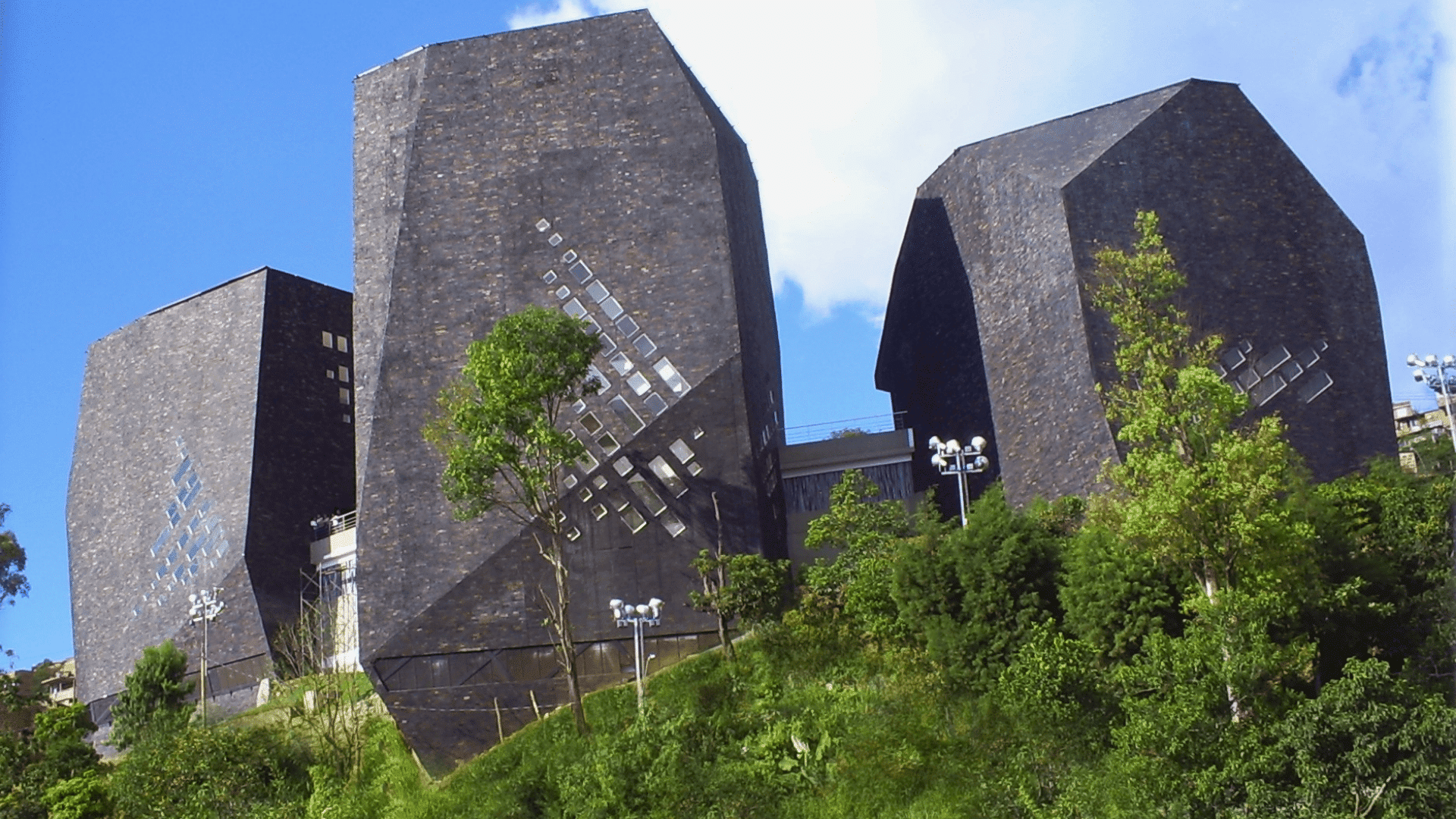
A striking public library, built into the hillside of a once-isolated neighborhood. Its design reflects modern thinking and social progress.
- Type: Public
- Style: Contemporary
8. Quinta de Bolívar
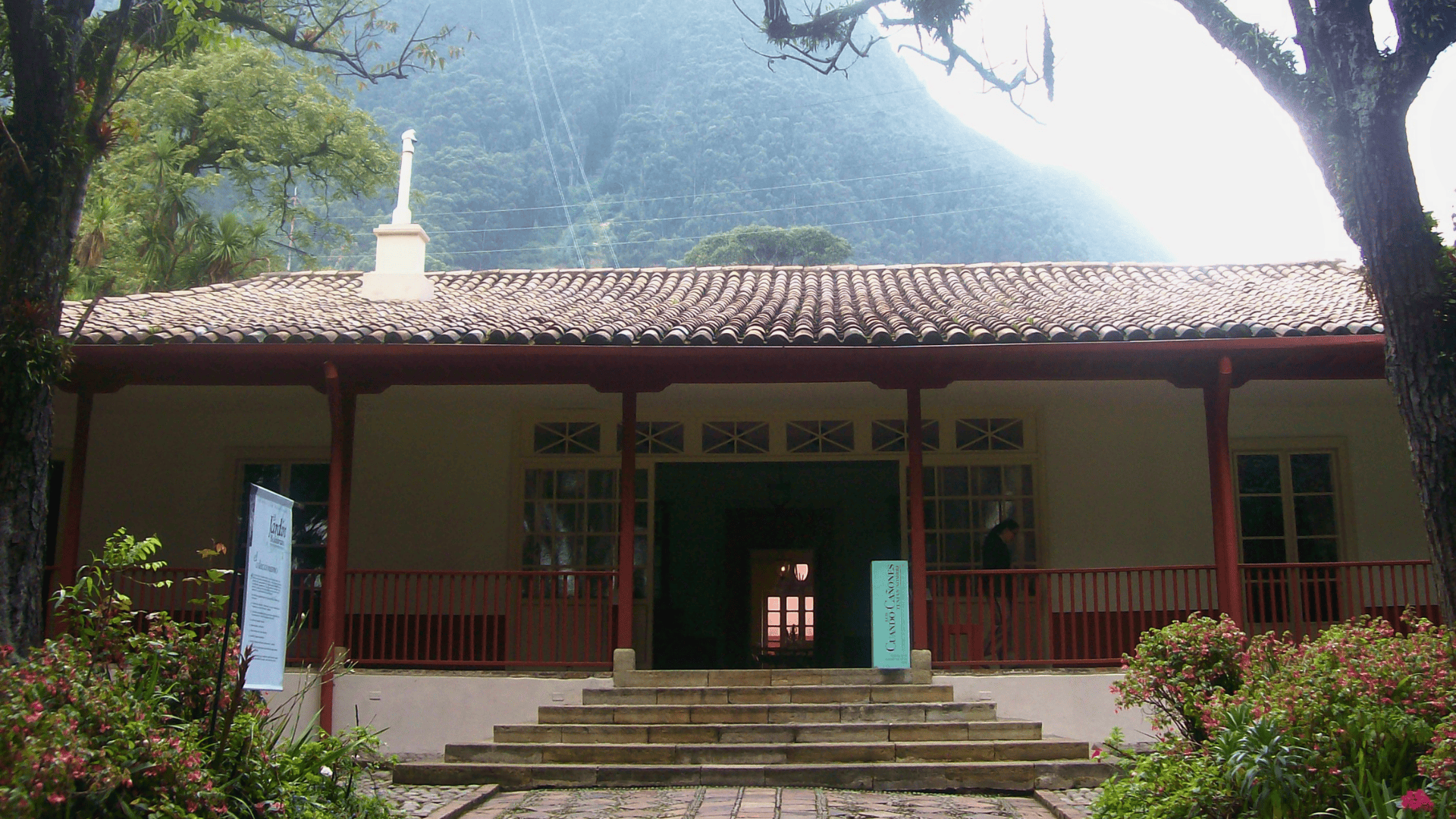
This colonial home in Bogotá once belonged to Simón Bolívar. It now serves as a museum and reminder of Colombia’s fight for independence.
- Type: Historic
- Style: Colonial
9. Parque Explora (Medellín)
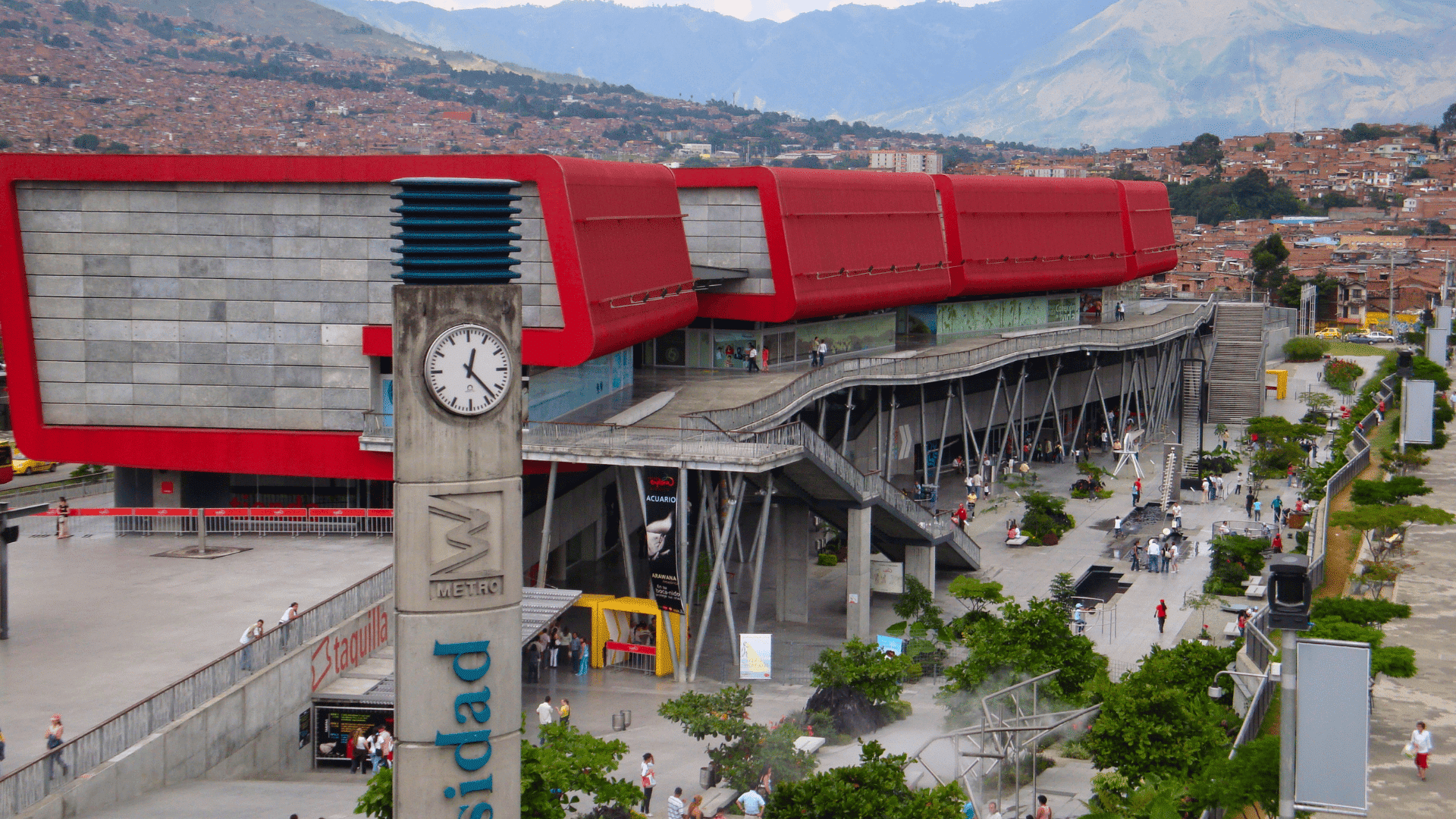
An interactive science and technology center with bold, red buildings. Its playful, modern design draws visitors of all ages.
- Type: Educational
- Style: Modern
10. Historic Mompox
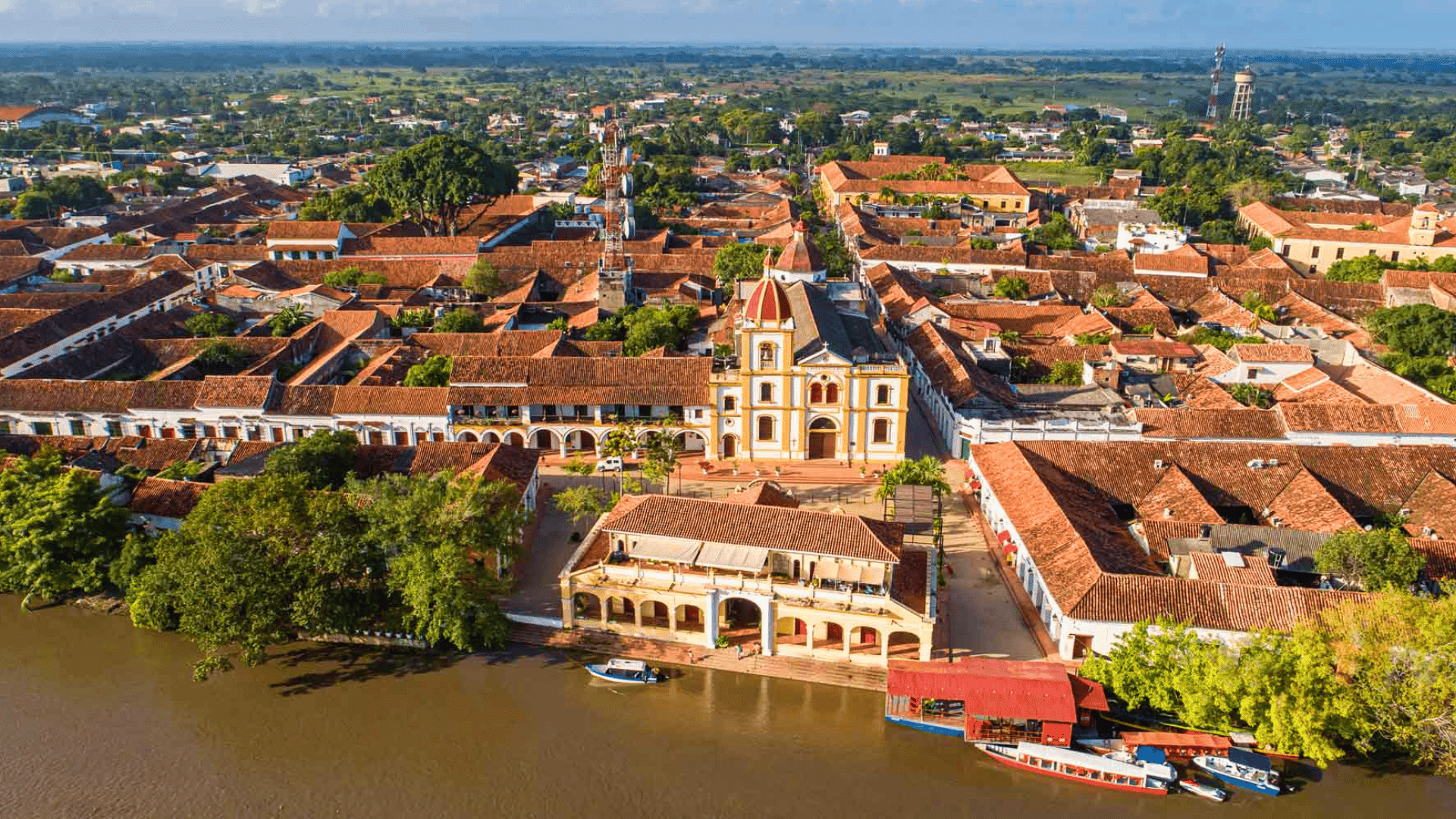
A riverside town frozen in time, filled with colonial-era churches, homes, and cobbled streets. Known for its peaceful setting and preserved architecture.
- Type: Town
- Style: Colonial
The People Behind Colombia’s Architecture
Colombia’s architecture wouldn’t be what it is without the vision and work of several key figures.
- Rogelio Salmona: A renowned Colombian architect, known for his use of red brick and design of public spaces, such as Torres del Parque in Bogotá. His work blends modernism with a sense of place and history.
- Giancarlo Mazzanti: Focused on creating public spaces for everyone. His work, like Biblioteca España in Medellín, uses bold shapes and innovative design to serve communities.
- Simón Vélez: Famous for bringing bamboo, or guadua, into the spotlight, Vélez has created stunning buildings that combine sustainability with beauty. His work has influenced eco-friendly architecture worldwide.
Architecture as a Reflection of Colombian Identity
The architecture speaks of culture, region, and history, each corner revealing something unique about the country.
Colombia’s culture is reflected in its buildings through colorful facades, intricate woodwork, and murals.
As you travel through Colombia, the architecture adapts to the region.
In coastal towns like Cartagena, buildings have thick walls to protect against the heat.
In the Andes, mountain towns design homes with steep roofs to fit the sloping terrain.
Many buildings, like colonial churches and forts, carry deep historical meaning.
They remind us of Colombia’s Spanish influence and its fight for independence, adding layers of history to the country’s built environment.
From homes to public buildings, Colombian architecture is a true reflection of its culture, region, and history.
Conclusion
Colombia’s architecture combines the old and the new.
Colonial buildings in places like Cartagena and modern designs in cities like Bogotá show the country’s past and bright future.
When you walk around, you’ll see how Colombia’s culture is shown in the buildings.
From colorful homes to old churches, the architecture reflects the country’s history and people.
Next time you’re in Colombia, take a moment to enjoy the buildings.
They aren’t just structures—they’re part of the country’s story, and they’re waiting for you to find them.
Have you visited Colombia, or are you planning to? Please share your thoughts with us in the comments!

